This is part 2 in the series of articles on the North-African automotive landscape and my experience driving there. Part 1 was about getting a rental car in Morocco.
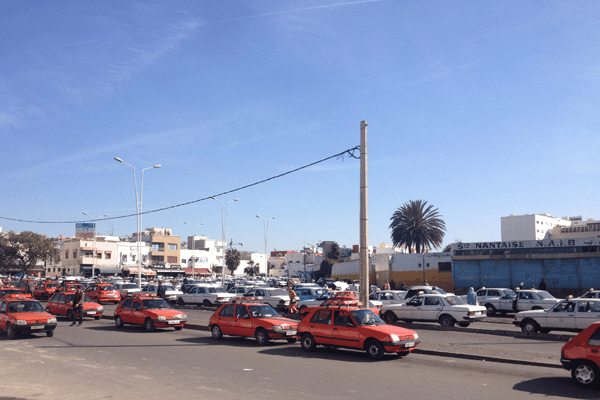 When stepping outside of a Moroccan airport, one of the first things you’ll notice is the long line of Mercedes-Benz taxis. Not the contemporary version, but almost all the W123 model from the 1970s and to a lesser extent the W124 model from the 1980s. I initially thought that this had something to do with them being specific airport taxis, but I would later discover that the streets all over Morocco are flooded with these smoky old diesels, which aren’t granted a well-deserved quiet retirement after a tough initial life in Europe. Rather, they are abused harder than ever, and maintenance in Morocco means that they fix a car when it breaks down.
When stepping outside of a Moroccan airport, one of the first things you’ll notice is the long line of Mercedes-Benz taxis. Not the contemporary version, but almost all the W123 model from the 1970s and to a lesser extent the W124 model from the 1980s. I initially thought that this had something to do with them being specific airport taxis, but I would later discover that the streets all over Morocco are flooded with these smoky old diesels, which aren’t granted a well-deserved quiet retirement after a tough initial life in Europe. Rather, they are abused harder than ever, and maintenance in Morocco means that they fix a car when it breaks down.
Petit taxis
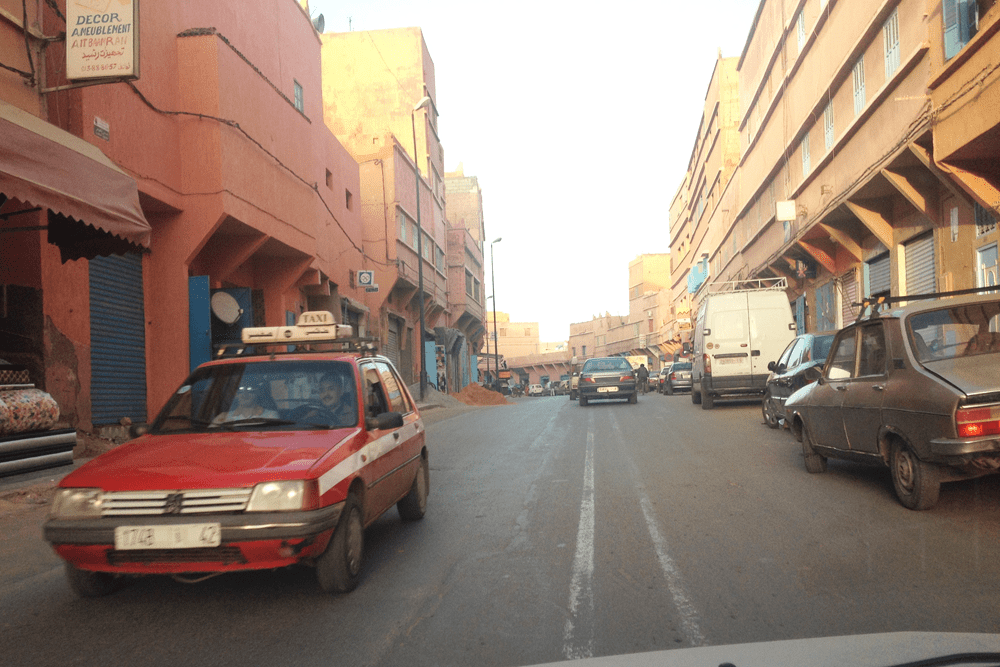 There are two types of taxis in Morocco: mini taxis (Petit taxi) and Grand taxis. The mini taxis take you within city limits to your destination for a fixed price of about 80 cents per ride, or 1.20 Euros at night. If they use a meter, the rate usually comes out the same, just remember that an additional 50 percent is added to the metered price. If you ride solo, the driver may pick up others headed in the same direction along the way, to a maximum of three passengers. Yet each pays the full amount, which is standard procedure in Morocco. Hey, you never know where you’ll meet new friends…
There are two types of taxis in Morocco: mini taxis (Petit taxi) and Grand taxis. The mini taxis take you within city limits to your destination for a fixed price of about 80 cents per ride, or 1.20 Euros at night. If they use a meter, the rate usually comes out the same, just remember that an additional 50 percent is added to the metered price. If you ride solo, the driver may pick up others headed in the same direction along the way, to a maximum of three passengers. Yet each pays the full amount, which is standard procedure in Morocco. Hey, you never know where you’ll meet new friends…
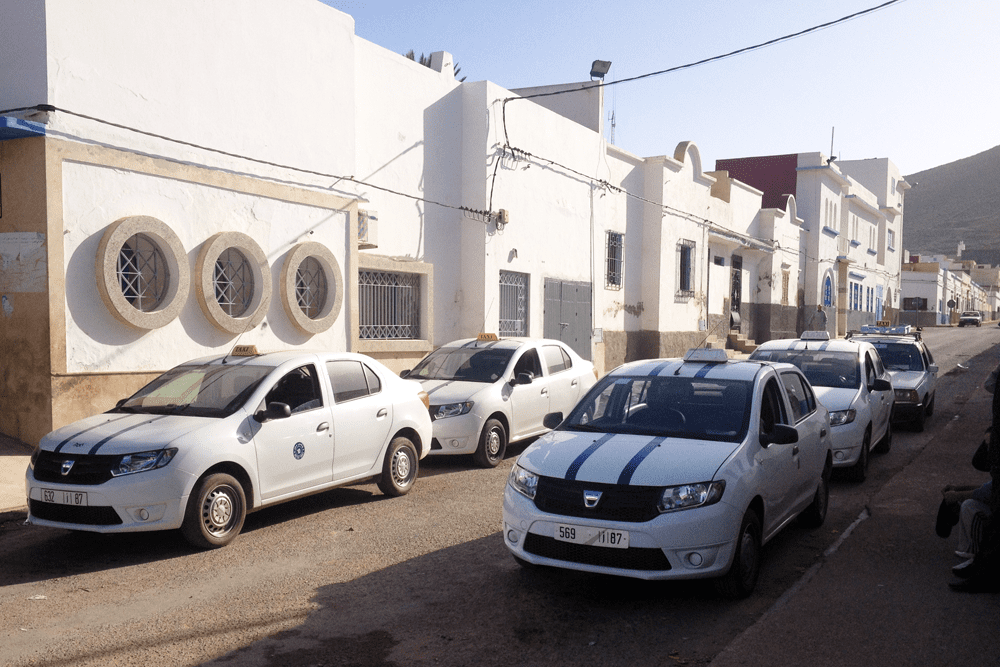 The car model used as a Petit taxi varies by city, for example in Marrakech (as in most cities) the Dacia Logan is most commonly spotted in the typical light brown taxi color, while in smaller towns older models are still in use. The streets of Agadir and Guelmim were chock-full of red Peugeots 205 and 309, while in Settat you needed to be on the lookout for a Fiat Uno in the local yellow / white taxi colors. I’ve even spotted a few Renaults 18 from the 1980s in use as a taxi. Almost all mini taxis are equipped with a (DIY) roof rack for oversized luggage.
The car model used as a Petit taxi varies by city, for example in Marrakech (as in most cities) the Dacia Logan is most commonly spotted in the typical light brown taxi color, while in smaller towns older models are still in use. The streets of Agadir and Guelmim were chock-full of red Peugeots 205 and 309, while in Settat you needed to be on the lookout for a Fiat Uno in the local yellow / white taxi colors. I’ve even spotted a few Renaults 18 from the 1980s in use as a taxi. Almost all mini taxis are equipped with a (DIY) roof rack for oversized luggage.
Grand taxis of Morocco
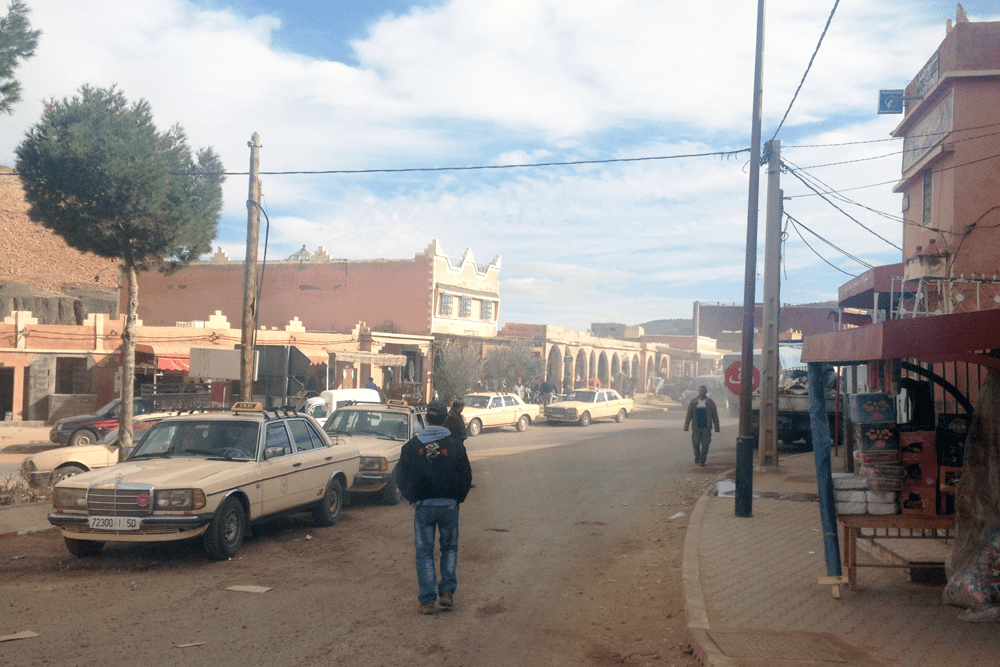 Grand taxis are mainly used for passenger transport between cities and thus travel greater distances. I estimate about 85% of these taxis to be a Mercedes-Benz W123, mainly with the 240d engine. The Peugeot 504 break (wagon) diesel takes up another 10% share, with the balance made up by other Mercedes models, including the mentioned W124 and the W126 S-Class. These Grand taxis are almost all painted white or beige and most also have a luggage rack on the roof. They often have astronomical mileage on their tachos, as half a million kilometers is almost standard, though I’ve seen one with 350,000 km on its 6-digit counter, but it’s likely there should have been an extra digit before it, considering its age and the smoke and sounds coming from the engine.
Grand taxis are mainly used for passenger transport between cities and thus travel greater distances. I estimate about 85% of these taxis to be a Mercedes-Benz W123, mainly with the 240d engine. The Peugeot 504 break (wagon) diesel takes up another 10% share, with the balance made up by other Mercedes models, including the mentioned W124 and the W126 S-Class. These Grand taxis are almost all painted white or beige and most also have a luggage rack on the roof. They often have astronomical mileage on their tachos, as half a million kilometers is almost standard, though I’ve seen one with 350,000 km on its 6-digit counter, but it’s likely there should have been an extra digit before it, considering its age and the smoke and sounds coming from the engine.
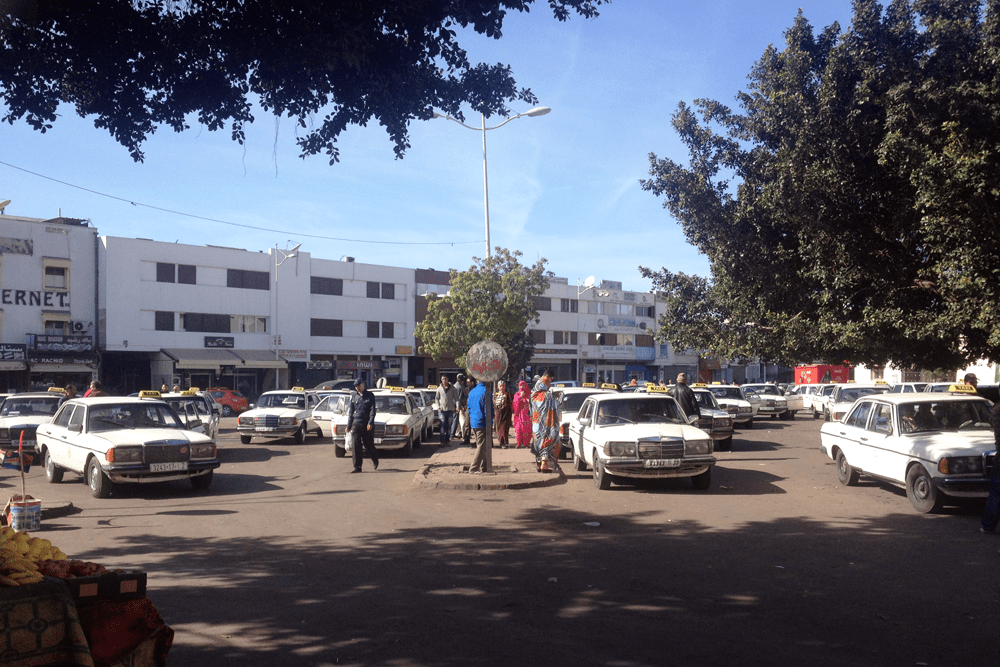 Every town in Morocco, regardless of its size, has a taxi stand for the Grand taxis, from where passengers can catch a ride to wherever they need. However, the Grand taxis won’t take off until they are full, and a full taxi in Morocco means no less than six passengers! Four are cramped in the back seat, while two snuggle in the front seat next to the driver. If you have no desire to experience how a canned sardine may feel, then you could opt to buy out the other “seating” positions, which means paying for a total of six passengers. This is not only much more comfortable, but it can also save you time waiting on the additional passengers to fill up the car. Booking a Grand taxi for a half-day drive will set you back around 25 Euros.
Every town in Morocco, regardless of its size, has a taxi stand for the Grand taxis, from where passengers can catch a ride to wherever they need. However, the Grand taxis won’t take off until they are full, and a full taxi in Morocco means no less than six passengers! Four are cramped in the back seat, while two snuggle in the front seat next to the driver. If you have no desire to experience how a canned sardine may feel, then you could opt to buy out the other “seating” positions, which means paying for a total of six passengers. This is not only much more comfortable, but it can also save you time waiting on the additional passengers to fill up the car. Booking a Grand taxi for a half-day drive will set you back around 25 Euros.
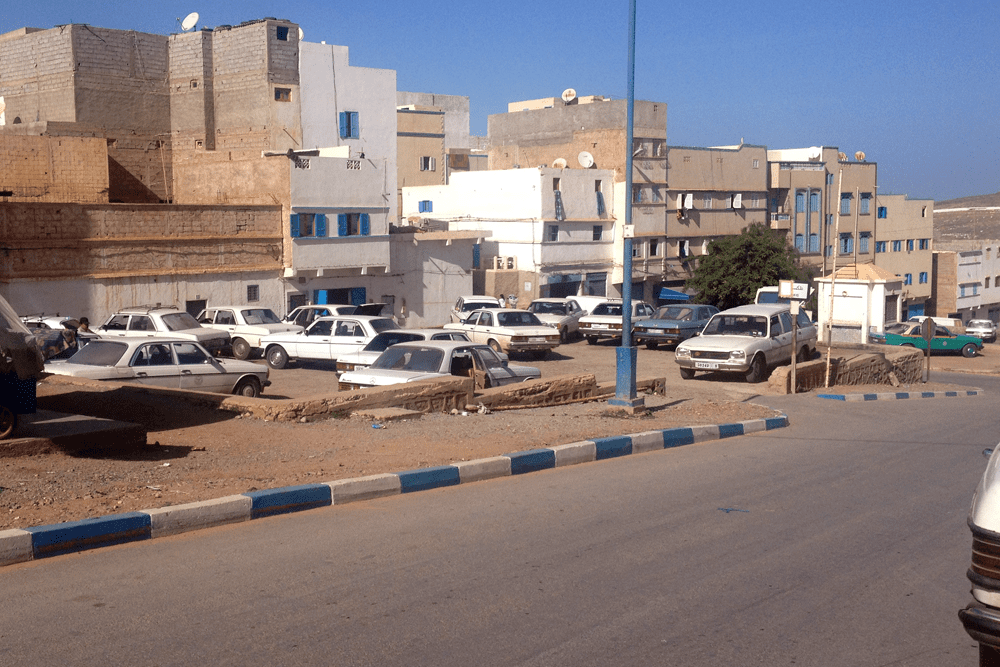 As a tourist you need to make clear to the driver whether you want to reserve just one (or more) places in a shared drive, or that you’d like to have the entire cab for yourself (and your travel companions), as most drivers will automatically assume that tourists prefer a private taxi. Grand taxis generally drive fixed routes, and if you want to get out somewhere along the way, you’ll still need to pay for the entire journey. If you’re looking for a non-standard route, you’re required to charter the taxi for private use and the driver will agree a fixed price with you beforehand.
As a tourist you need to make clear to the driver whether you want to reserve just one (or more) places in a shared drive, or that you’d like to have the entire cab for yourself (and your travel companions), as most drivers will automatically assume that tourists prefer a private taxi. Grand taxis generally drive fixed routes, and if you want to get out somewhere along the way, you’ll still need to pay for the entire journey. If you’re looking for a non-standard route, you’re required to charter the taxi for private use and the driver will agree a fixed price with you beforehand.
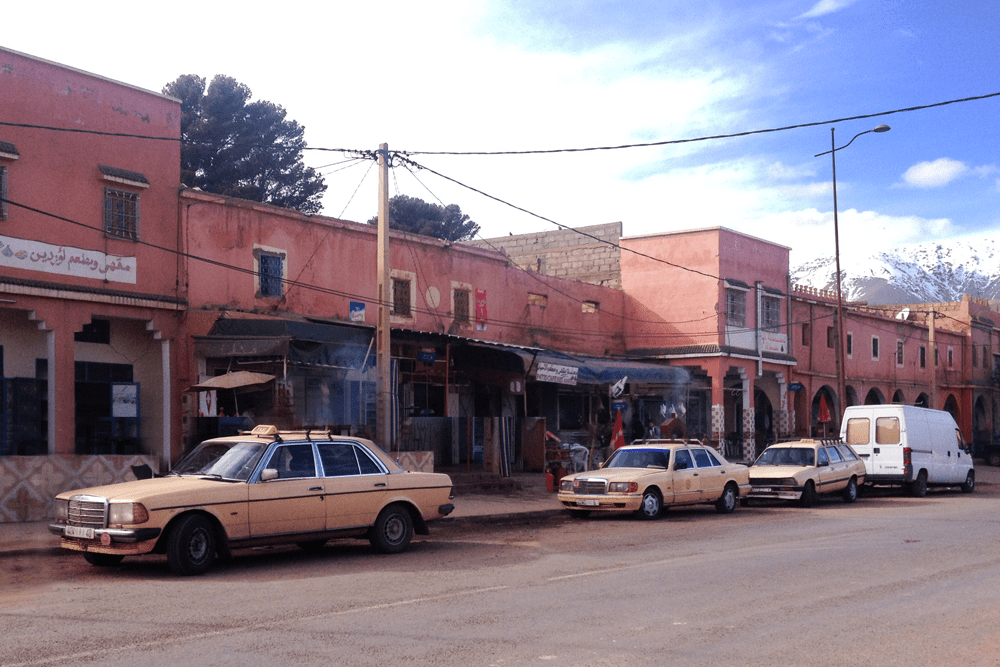 Grand taxis are quicker than a bus and sometimes even quicker than a train, but be aware that drivers have some “un-western-like” driving habits. Most aren’t afraid to put their foot down on a straight road, disregarding the speed limit, while for some it’s not unusual to start an overtaking maneuver in or just before a blind curve, especially in the mountains where traffic is light. And with four people in the back, wearing a seat belt may prove challenging. If you do insist on wearing one, your only option may be to pay for an additional seat. I wouldn’t recommend taking a Grand taxi at night, as the drivers sometimes work round the clock to earn a living, and I’ve heard stories of drivers falling asleep behind the wheel.
Grand taxis are quicker than a bus and sometimes even quicker than a train, but be aware that drivers have some “un-western-like” driving habits. Most aren’t afraid to put their foot down on a straight road, disregarding the speed limit, while for some it’s not unusual to start an overtaking maneuver in or just before a blind curve, especially in the mountains where traffic is light. And with four people in the back, wearing a seat belt may prove challenging. If you do insist on wearing one, your only option may be to pay for an additional seat. I wouldn’t recommend taking a Grand taxi at night, as the drivers sometimes work round the clock to earn a living, and I’ve heard stories of drivers falling asleep behind the wheel.
Cargo taxis
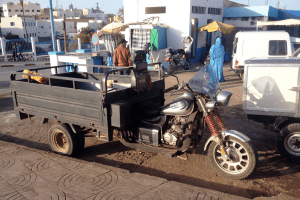
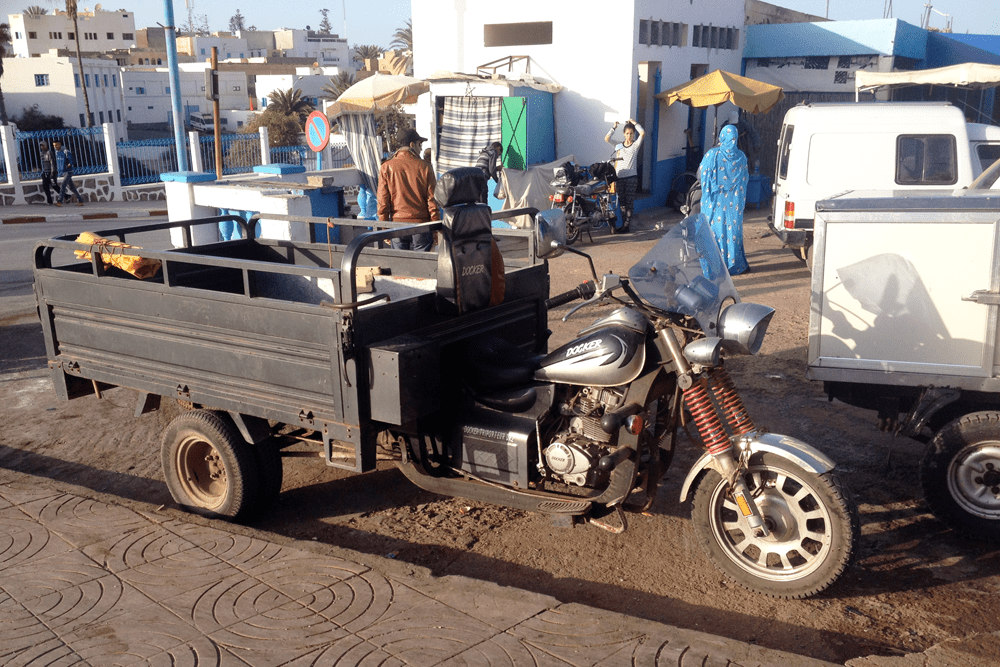 Besides the regular taxis, you’ll also find cargo taxis in most Moroccan cities. These also often have a designated taxi stand, usually somewhere near the local shops. The most commonly used vehicle for this purpose is a cargo tricycle, a crossover of a motorcycle and a pickup truck. The first half looks like a motorbike, but behind the saddle the frame widens to a rear axle with two wheels and a cargo bed on top. Most of these are built by the Chinese motorcycle manufacturer Docker.
Besides the regular taxis, you’ll also find cargo taxis in most Moroccan cities. These also often have a designated taxi stand, usually somewhere near the local shops. The most commonly used vehicle for this purpose is a cargo tricycle, a crossover of a motorcycle and a pickup truck. The first half looks like a motorbike, but behind the saddle the frame widens to a rear axle with two wheels and a cargo bed on top. Most of these are built by the Chinese motorcycle manufacturer Docker.
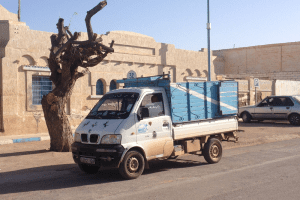
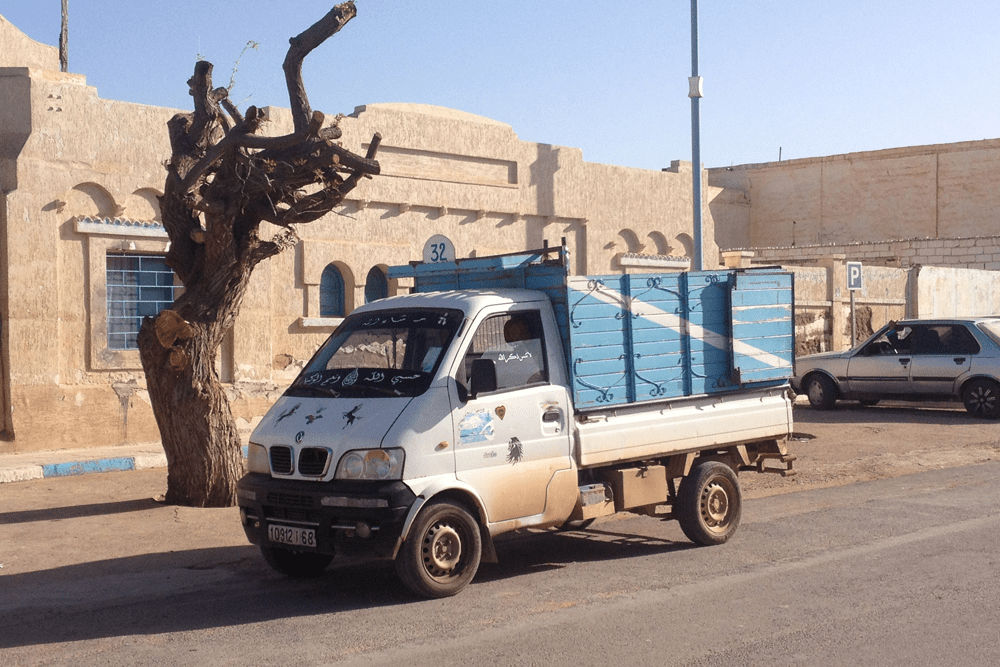 In some cities I saw Suzuki Carry mini pickup trucks instead, or the same model rebadged as a Chevrolet. I even spotted a few Chinese-built Dongfeng and Chana mini pickup trucks of the same size (and pretty much copied design).
In some cities I saw Suzuki Carry mini pickup trucks instead, or the same model rebadged as a Chevrolet. I even spotted a few Chinese-built Dongfeng and Chana mini pickup trucks of the same size (and pretty much copied design).









